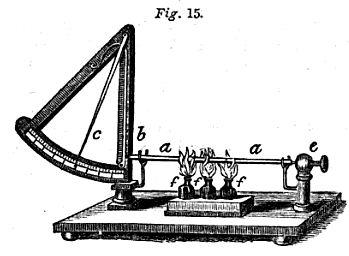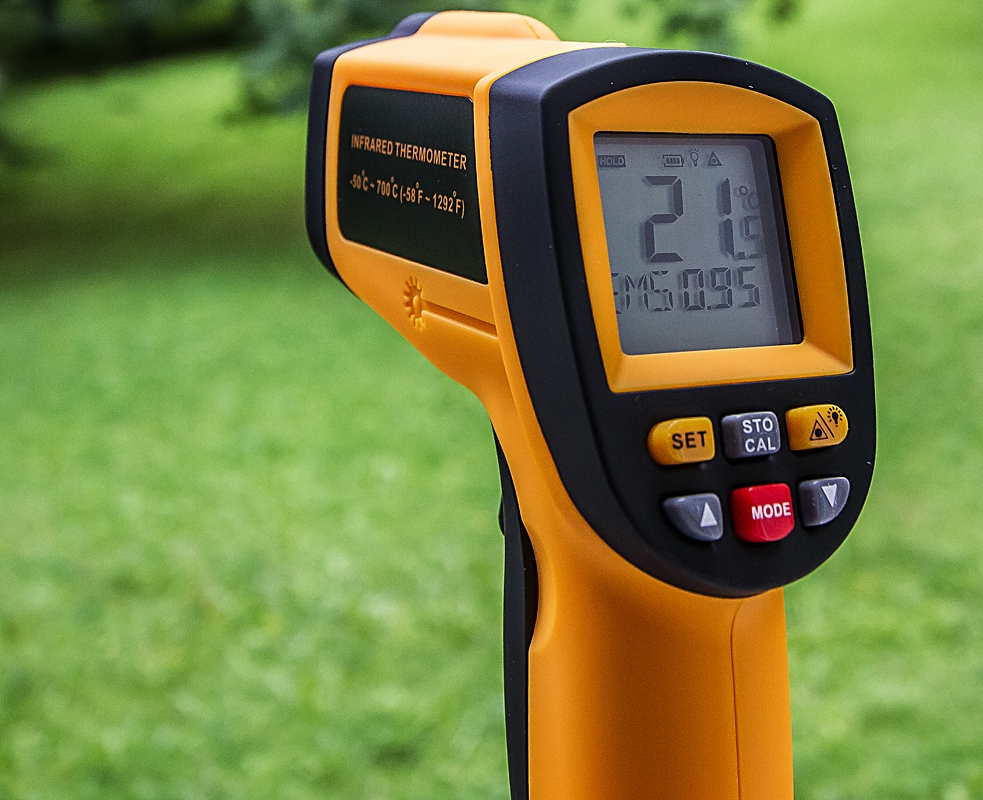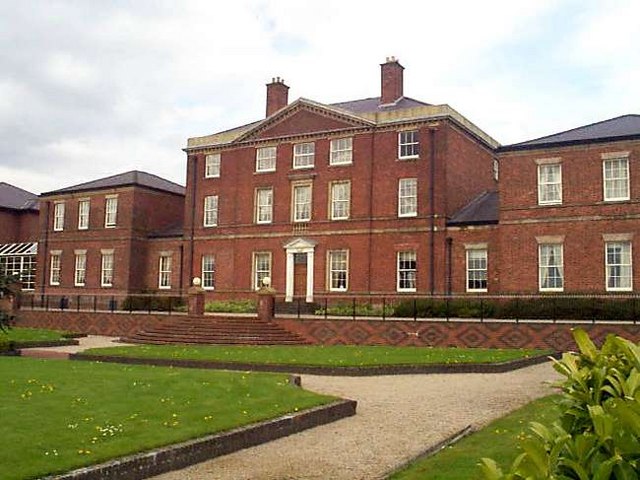|
Pyrometer
A pyrometer is a type of remote-sensing thermometer used to measure the temperature of distant objects. Various forms of pyrometers have historically existed. In the modern usage, it is a device that from a distance determines the temperature of a surface from the amount of the thermal radiation it emits, a process known as pyrometry and sometimes radiometry. The word pyrometer comes from the Greek language, Greek word for fire, "πῦρ" (''pyr''), and ''meter'', meaning to measure. The word pyrometer was originally coined to denote a device capable of measuring the temperature of an object by its incandescence, visible light emitted by a body which is at least red-hot. Modern pyrometers or infrared thermometers also measure the temperature of cooler objects, down to room temperature, by detecting their infrared radiation flux. Principle It is based on the principle that the intensity of light received by the observer depends upon distance of observer from source and temp ... [...More Info...] [...Related Items...] OR: [Wikipedia] [Google] [Baidu] |
Disappearing-filament Pyrometer
The disappearing-filament pyrometer is an optical pyrometer, in which the temperature of a glowing incandescent object is measured by comparing it to the light of a heated filament. Invented independently in 1901 by Ludwig Holborn and Ferdinand Kurlbaum in Germany and Everett Fleet Morse in the United States, it was the first device which could measure temperatures above 1000 °C. Disappearing filament pyrometers have been used to measure temperatures between about 600 °C and 3000 °C. Like other optical pyrometers they are used to measure the temperature of objects too hot for contact thermometers, such as molten metals. Widely used in the steel and ceramics industries as well as for research, they have been almost totally superseded by electronic spectral-band pyrometers. The simplest design has optics like a Keplerian telescope. A thin wire (filament), placed at the focal plane of the objective lens, is heated by electric current. When seen through the ... [...More Info...] [...Related Items...] OR: [Wikipedia] [Google] [Baidu] |
Infrared Thermometer
An infrared thermometer is a thermometer which infers temperature from a portion of the thermal radiation sometimes called black-body radiation emitted by the object being measured. They are sometimes called laser thermometers as a laser is used to help aim the thermometer, or non-contact thermometers or temperature guns, to describe the device's ability to measure temperature from a distance. By knowing the amount of infrared energy emitted by the object and its emissivity, the object's temperature can often be determined within a certain range of its actual temperature. Infrared thermometers are a subset of devices known as "thermal radiation thermometers". Sometimes, especially near ambient temperatures, readings may be subject to error due to the reflection of radiation from a hotter body—even the person holding the instrument — rather than radiated by the object being measured, and to an incorrectly assumed emissivity. The design essentially consists of a lens to ... [...More Info...] [...Related Items...] OR: [Wikipedia] [Google] [Baidu] |
Radiometry
Radiometry is a set of techniques for measuring electromagnetic radiation, including visible light. Radiometric techniques in optics characterize the distribution of the radiation's power in space, as opposed to photometric techniques, which characterize the light's interaction with the human eye. The fundamental difference between radiometry and photometry is that radiometry gives the entire optical radiation spectrum, while photometry is limited to the visible spectrum. Radiometry is distinct from quantum techniques such as photon counting. The use of radiometers to determine the temperature of objects and gasses by measuring radiation flux is called pyrometry. Handheld pyrometer devices are often marketed as infrared thermometers. Radiometry is important in astronomy, especially radio astronomy, and plays a significant role in Earth remote sensing. The measurement techniques categorized as ''radiometry'' in optics are called ''photometry'' in some astronomical applicat ... [...More Info...] [...Related Items...] OR: [Wikipedia] [Google] [Baidu] |
Josiah Wedgwood
Josiah Wedgwood (12 July 1730 – 3 January 1795) was an English potter, entrepreneur and abolitionist. Founding the Wedgwood company in 1759, he developed improved pottery bodies by systematic experimentation, and was the leader in the industrialisation of the manufacture of European pottery. The renewed classical enthusiasms of the late 1760s and early 1770s were of major importance to his sales promotion. His expensive goods were in much demand from the upper classes, while he used emulation effects to market cheaper sets to the rest of society. Every new invention that Wedgwood produced – green glaze, creamware, black basalt, and jasperware – was quickly copied. Having once achieved efficiency in production, he obtained efficiencies in sales and distribution. His showrooms in London gave the public the chance to see his complete range of tableware. Wedgwood's company never made porcelain during his lifetime, but specialised in fine earthenwares and stonewares that h ... [...More Info...] [...Related Items...] OR: [Wikipedia] [Google] [Baidu] |
Wedgwood Museum
Wedgwood is an English fine china, porcelain and luxury accessories manufacturer that was founded on 1 May 1759 by the potter and entrepreneur Josiah Wedgwood and was first incorporated in 1895 as Josiah Wedgwood and Sons Ltd. It was rapidly successful and was soon one of the largest manufacturers of Staffordshire pottery, "a firm that has done more to spread the knowledge and enhance the reputation of British ceramic art than any other manufacturer", exporting across Europe as far as Russia, and to the Americas. It was especially successful at producing fine earthenware and stoneware that were accepted as equivalent in quality to porcelain (which Wedgwood only made later) but were considerably cheaper. Wedgwood is especially associated with the "dry-bodied" (unglazed) stoneware Jasperware in contrasting colours, and in particular that in "Wedgwood blue" and white, always much the most popular colours, though there are several others. Jasperware has been made continuously ... [...More Info...] [...Related Items...] OR: [Wikipedia] [Google] [Baidu] |
Resistance Thermometer
Resistance thermometers, also called resistance temperature detectors (RTDs), are sensors used to measure temperature. Many RTD elements consist of a length of fine wire wrapped around a heat-resistant ceramic or glass core but other constructions are also used. The RTD wire is a pure material, typically platinum (Pt), nickel (Ni), or copper (Cu). The material has an accurate resistance/temperature relationship which is used to provide an indication of temperature. As RTD elements are fragile, they are often housed in protective probes. RTDs, which have higher accuracy and repeatability, are slowly replacing thermocouples in industrial applications below 600 ° C. Resistance/temperature relationship of metals Common RTD sensing elements for biomedical application constructed of platinum (Pt), nickel (Ni), or copper (Cu) have a repeatable resistance versus temperature relationship (''R'' vs ''T'') and operating temperature range. The ''R'' vs ''T'' relationship is defin ... [...More Info...] [...Related Items...] OR: [Wikipedia] [Google] [Baidu] |
Science Museum, London
The Science Museum is a major museum on Exhibition Road in South Kensington, London. It was founded in 1857 and is one of the city's major tourist attractions, attracting 3.3 million visitors annually in 2019. Like other publicly funded national museums in the United Kingdom, the Science Museum does not charge visitors for admission, although visitors are requested to make a donation if they are able. Temporary exhibitions may incur an admission fee. It is one of the five museums in the Science Museum Group. Founding and history The museum was founded in 1857 under Bennet Woodcroft from the collection of the Royal Society of Arts and surplus items from the Great Exhibition as part of the South Kensington Museum, together with what is now the Victoria and Albert Museum. It included a collection of machinery which became the ''Museum of Patents'' in 1858, and the ''Patent Office Museum'' in 1863. This collection contained many of the most famous exhibits of what is ... [...More Info...] [...Related Items...] OR: [Wikipedia] [Google] [Baidu] |
Leonhard Euler
Leonhard Euler ( , ; 15 April 170718 September 1783) was a Swiss mathematician, physicist, astronomer, geographer, logician and engineer who founded the studies of graph theory and topology and made pioneering and influential discoveries in many other branches of mathematics such as analytic number theory, complex analysis, and infinitesimal calculus. He introduced much of modern mathematical terminology and Mathematical notation, notation, including the notion of a function (mathematics), mathematical function. He is also known for his work in mechanics, fluid dynamics, optics, astronomy and music theory. Euler is held to be one of the greatest mathematicians in history and the greatest of the 18th century. A statement attributed to Pierre-Simon Laplace expresses Euler's influence on mathematics: "Read Euler, read Euler, he is the master of us all." Carl Friedrich Gauss remarked: "The study of Euler's works will remain the best school for the different fields of mathematics, a ... [...More Info...] [...Related Items...] OR: [Wikipedia] [Google] [Baidu] |
Silicon Grown By Czochralski Process 1956
Silicon is a chemical element with the symbol Si and atomic number 14. It is a hard, brittle crystalline solid with a blue-grey metallic luster, and is a tetravalent metalloid and semiconductor. It is a member of group 14 in the periodic table: carbon is above it; and germanium, tin, lead, and flerovium are below it. It is relatively unreactive. Because of its high chemical affinity for oxygen, it was not until 1823 that Jöns Jakob Berzelius was first able to prepare it and characterize it in pure form. Its oxides form a family of anions known as silicates. Its melting and boiling points of 1414 °C and 3265 °C, respectively, are the second highest among all the metalloids and nonmetals, being surpassed only by boron. Silicon is the eighth most common element in the universe by mass, but very rarely occurs as the pure element in the Earth's crust. It is widely distributed in space in cosmic dusts, planetoids, and planets as various forms of silicon dioxide ... [...More Info...] [...Related Items...] OR: [Wikipedia] [Google] [Baidu] |






